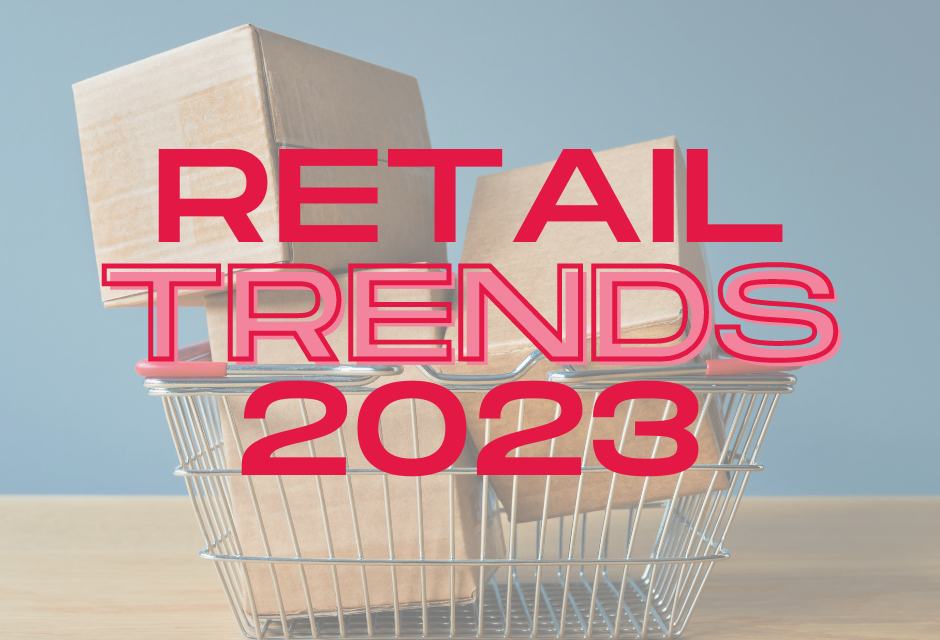Innovation and technologies that enable fast communication and transfer of information have a huge impact on the rapid spread of trends in the retail industry. The digital age has a lot to do with the transformation that is taking place in the market. If you want to stay competitive, you need to constantly follow trends and use available forecasts to be one step ahead of your competition. To streamline this process, in this post, we showcase trends that will be important in the retail industry in the latter part of 2023.
Why is access to current data significant in business development in the retail industry?
Transformations in the global economy and global trends are a way to increase your awareness and understanding of customers. By offering only services and products that are in demand on the market, you can become an expansive, recognizable, reputable, and respected brand.
Data relevance is crucial. Their conscious and in-depth analysis can help in setting the goal and direction of further actions. Demand forecast and indicator analysis will facilitate the introduction of strategies that will minimize the risk of failure and financial losses.
Integrating data and incorporating it into business plans for the future can also be a way to increase brand performance, manage costs more effectively, build a positive brand image, and improve the overall quality of work.
The following data and information may be helpful in planning changes in the retails business and more effective adaptation. These data come from Polish and foreign sources.
Reshaping the approach to business to the decision point—a key moment in shopping
One of the trends noticed in the market is changing the approach to acquiring customers and eliminating obstacles that stand in the way of finalizing purchases. The study conducted in June 2023 by the Global Consumer Insights Pulse Survey is clear: a path leading to shopping must be as simple as possible.
It is, therefore, necessary to prioritize the customer's position and provide him with all the necessary information and tools, thanks to which the purchase decision will be quick and unwavering.
The retail industry must focus in the coming months and years on using modern technology and innovation in customer acquisition at the crucial decision-making moment. Companies should concentrate on the development of solutions that will facilitate more efficient communication with customers, build positive and long-term relationships with them, and invest in the development of social media and customer service.
It is also important to remember to take into account the ecological, environmental, social and sustainable development trend in business activities. Increased consumer awareness in these fields is often a factor that influences the final purchase decision. Increasing customer focus at the moment of purchase can increase business profitability.
Therefore, it is essential to remember customer experience, which relates to offering additional services, hyper-personalization of the offer in terms of purchase history, customer preferences, and their relevance.
Why is it essential to remember about trends and consumer prioritization?
Source: https://www.pwc.com/gx/en/industries/consumer-markets/consumer-insights-survey.html?WT.mc_id=CT1-PL50-DM2-TR2-LS4-ND40-TTA5-CN_GCIS-
Technological trends in the retail industry
Technology and artificial intelligence will have an increasing impact on the development of the retail industry. The introduction of the first modern solutions to the market, such as new shopping channels and sales models, can already be seen. Technologies that will be used more and more often in the retail industry are POS (Point of Sale), SCM (Supply Chain Management), SCO (self-check-outs), AI (Artificial Intelligence), Cloud, Metaverse, as well as the concept of IoT (Internet of Things).
E-commerce
The popularity of e-commerce has increased dramatically during the pandemic and Covid-19. However, the trend clearly shows that online shopping will continue to grow. Analysts say that by 2026, the global e-commerce industry will be worth up to $8.1 trillion.
Source: https://blog.hootsuite.com/retails-trends/
Q-commerce
Currently, you can also see the use of the Quick-commerce model. This way of selling may involve higher costs for the customer. The advantage, however, is the very fast order delivery time—even within a few minutes.
Frictionless retail
This form of sale also uses the latest technologies. It consists in maximally limiting the customer's involvement in the shopping process in brick-and-mortar stores. They don't have to scan chosen products, stand in line, and take out a payment card out of pocket to pay for selected products.
Products are scanned as soon as they are taken from the store shelf. When leaving the store, the customer's account is automatically charged for the amount due.
The convenience of shopping in this way meets with growing interest. It is estimated that by 2027, the number of frictionless retail stores will increase up to 12,200.
The following PwC report, “Frictionless retail—The future of shopping” from November 2022, shows the trend in the development of this sales model:
Source: https://www.pwc.pl/pl/artykuly/transformacja-technologiczna-w-branzy-detalicznej-ma-byc-szybciej-i-latwiej.html
Ecological trends
The global awareness of society on ecology, sustainable development, and carbon footprint reduction has a very large impact on the operation of the retail industry and the direction of its further development. These are multi-faceted issues. Consumers can expect that the environmental impact of production is kept to a minimum. The possibility of recycling and the use of natural materials are also important to them.
Over 70% of respondents say they are willing to pay more for goods that are produced in accordance with the principles of sustainable development.
Other sustainability issues in the retail industry, such as eco-friendliness, production, product origin transparency, biodegradability, and ethical practices, are discussed in the following PwC’s Global Consumer Insights Pulse Survey from June 2023:
Source: https://www.pwc.com/gx/en/industries/consumer-markets/consumer-insights-survey.html?WT.mc_id=CT1-PL50-DM2-TR2-LS4-ND40-TTA5-CN_GCIS-
Search engines, retailers’ websites, and social media trends
Improving the customer experience also means reaching clients with your offer in places where they are. It's not just brick-and-mortar stores and marketplaces but also attempts to attract attention in search engines, interest of clients on the brand's website, or active participation in building engagement in social media.
Retail and its possibilities increase as social and mobile commerce develops. According to a survey conducted by RetailDive for 2023, during this year, 81% of retailers will decide to expand and increase their presence in digital sales channels.
Here's a survey that explains where customers are looking for information about the products they plan to buy:
Source: https://www.pwc.com/gx/en/industries/consumer-markets/consumer-insights-survey.html?WT.mc_id=CT1-PL50-DM2-TR2-LS4-ND40-TTA5-CN_GCIS-
55% of potential customers look for information in search engines, 31% use social media, and 34% decide to visit the retailer's website to get information about the products they would like to purchase.
In the chart below, you can see a clear upward trend in purchases via social platforms. The comparison applies to Facebook, Pinterest, Instagram, and TikTok. Each of them gains millions of social buyers every year. The trend until 2026, according to the results of research and forecasts, is to be upward:
Source: https://www.insiderintelligence.com/content/retail-trends-watch-2023
Other trends that will affect the direction of development of the retail industry
What other trends will affect the retail industry in the latter part of 2023?
Free shipping
90% of consumers say they can shop online more often if they receive a free shipping offer from a retailer.
Voice searches on mobile devices
In recent years, the use of voice assistants has been steadily increasing. The trend is still on the rise. It is estimated that by 2024, the number of voice assistants will reach 8.5 billion.
Final conclusions
Changes in the retail industry occur very quickly and require dynamic reshaping from retailers who want to maintain their leading position. First of all, it will be necessary to focus on frictionless retail and the use of the latest technologies that enable improved user experience and convenient shopping locally and online. Consumers will be more and more demanding. What counts for them will be the lack of obstacles while shopping, the speed of shipping, cost-effectiveness, and even the ability to check the product before buying it. Implementing all these changes will not be easy but necessary and will require retailers to take a multi-faceted look at the needs and expectations of the targeted audience.




